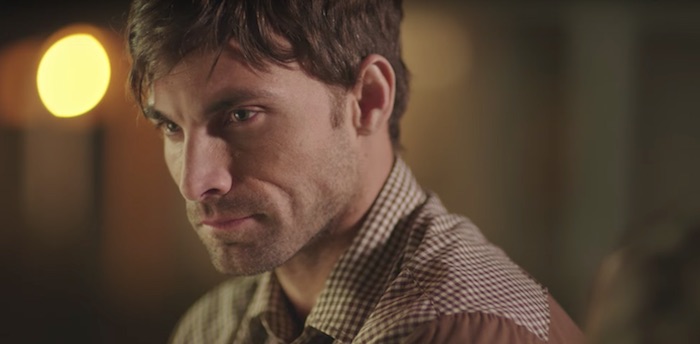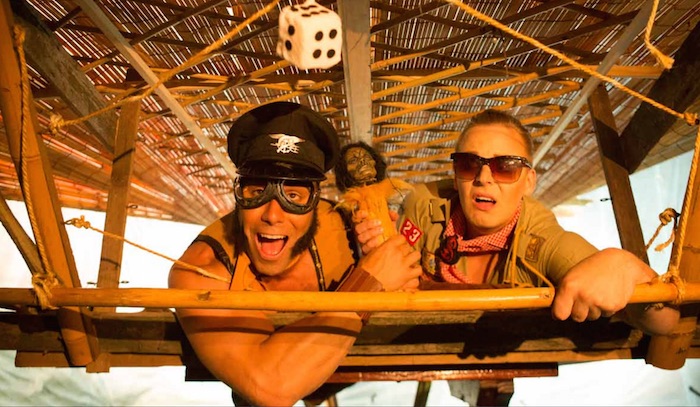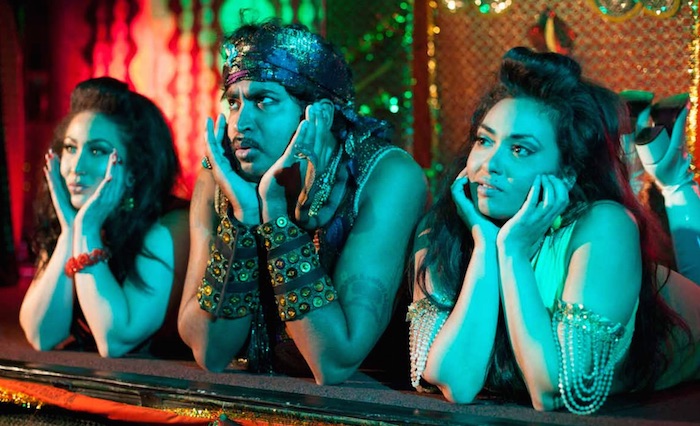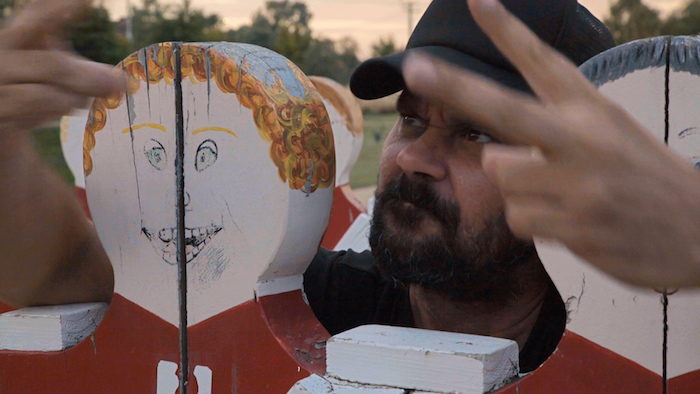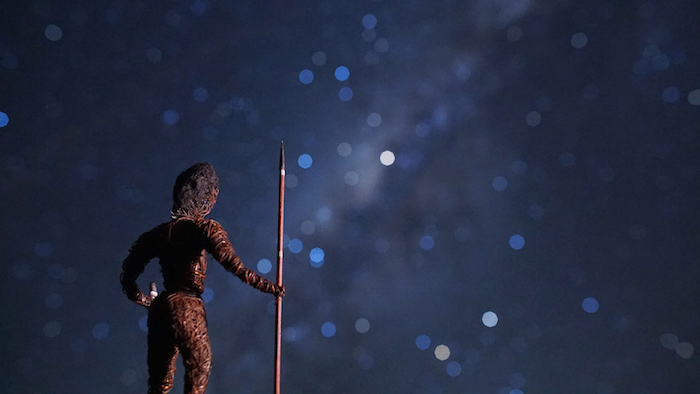ONCE UPON A TIME IN VENICE
 Thursday, August 17, 2017 at 7:04PM
Thursday, August 17, 2017 at 7:04PM Stars: Bruce Willis, John Goodman, Thomas Middleditch, Jason Momoa, Famke Janssen, Emily Robinson, Jessica Gomes, Kaleti Williams and Adam Goldberg.
Writers: Mark Cullen, Robb Cullen.
Director: Mark Cullen.
Rating: 3/5
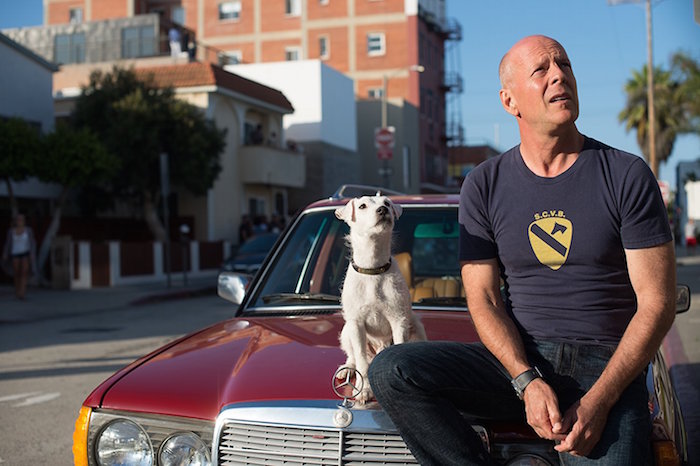
As the afternoon orange bathes California’s Venice Beach neighbourhood, imagine Hudson Hawk barrelling along Abbot Kinney Boulevard, collecting John Wick as he enters from Brooks Avenue, before both are rammed by the Inherent Vice bus on Main. The resulting tangled mass in the middle of the intersection would be Mark and Robb Cullen’s Once Upon a Time in Venice.
Conjured as a free-spirited vehicle for the charms of their leading man in his wisecracking heyday, the brothers Cullen reteam with Bruce Willis to try to right the wrong that was 2010’s Cop Out, the Kevin Smith-directed travesty that put a handbrake on Tracy Morgan’s film momentum. Mark’s directing debut is equal parts crime thriller, family drama and Cal-noir detective story, complete with some tone-deaf stereotyping and cute dog moments. The goofy, off-kilter riff on LA sleaze fits within a genre highlighted by better films like Paul Thomas Anderson’s Thomas Pinchon adaptation, The Coen’s The Big Lebowski or Robert Altman’s The Long Goodbye (Renny Harlin’s The Adventures of Ford Fairlane, too, but whether that was superior is a maybe).
Like the traditional fairy tales from which the film takes its title, Once Upon a Time in Venice has a storyteller, in the form of John (Thomas Middleditch), a nerdy intern/protégé for ex-LAPD cop Steve Ford (Willis), a not-very-successful private-eye sliding further into the underworld morass he mostly frequents. The film opens with a patently ridiculous sequence in which Ford, having bedded his client’s daughter Nola (Australian supermodel Jessica Gomes), escapes her family thugs by fleeing naked into the night on a skateboard. The entire gag takes a long while to play out (the money shot - close-up on a set of buttocks most definitely not those of the 62 year-old Willis), though it is infused with the kind of nutty energy that Willis last exhibited in his 1991 megaflop, Hudson Hawk (a film that has since acquired an army of ‘guilty pleasure’ defenders, including yours truly).
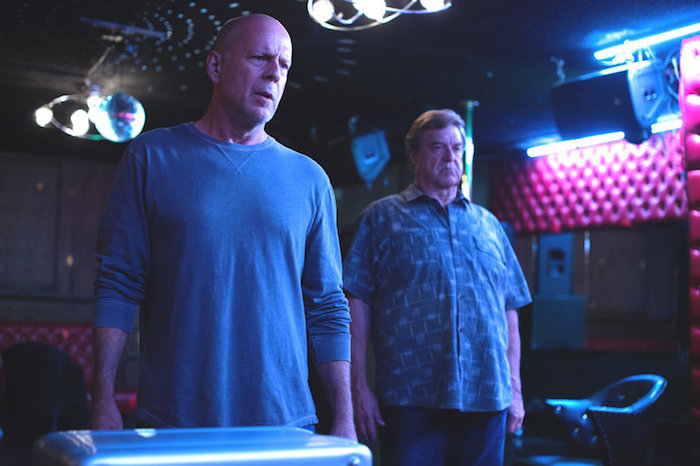
Things get personal for our hero after heavies working for local drug kingpin Spyder (a very funny Jason Momoa), rough up the family home of Ford’s sister, Katey (Famke Janssen, deserving of better) and niece, Taylor (Emily Robinson). When they dog-nap the beloved pet, Buddy, the PI undertakes a series of schemes and capers that land him deeper in the mess he has created. All the while, a frantic Ford is working a case involving land developer ‘Lew the Jew’ (Adam Goldberg), whose deal is being scuppered by a mysterious graffiti artist painting X-rated murals of the real estate tycoon (a subplot as puerile as it sounds, though undeniably funny in parts).
Filling out the ‘old chum’ role here that Danny Aiello played in …Hawk is John Goodman, bringing some welcome comedic skill as Dave, an ageing holdover from 70’s Venice hippy/surfie culture on the verge of losing everything (including his mind) in a messy divorce. He is one of several known names who front up for bit parts, probably because they all live within blocks of the production’s West coast locations; among them are Elisabeth Rohm, Kal Penn, Adrian Martinez, Christopher McDonald and, for a few utterly bizarre seconds, David Arquette.
Only occasionally exhibiting the advance of time, Bruce Willis clearly enjoys an all-too-rare opportunity to flex his brand of on-screen comedic skill. One can see the smooth charm of Moonlighting’s ‘David Addison’, the slapstick energy of Blind Date’s Walter Davis and the scummy antihero of Bonfire of The Vanities ‘Peter Fallow’ in Ford. You may find yourself muttering, “He’s still got it,” if only because, not for the first time in his career, he elevates what could have been misguided chaos into something entirely watchable, even likable.
 Action,
Action,  Bruce Willis,
Bruce Willis,  Comedy,
Comedy,  Jason Momoa
Jason Momoa 